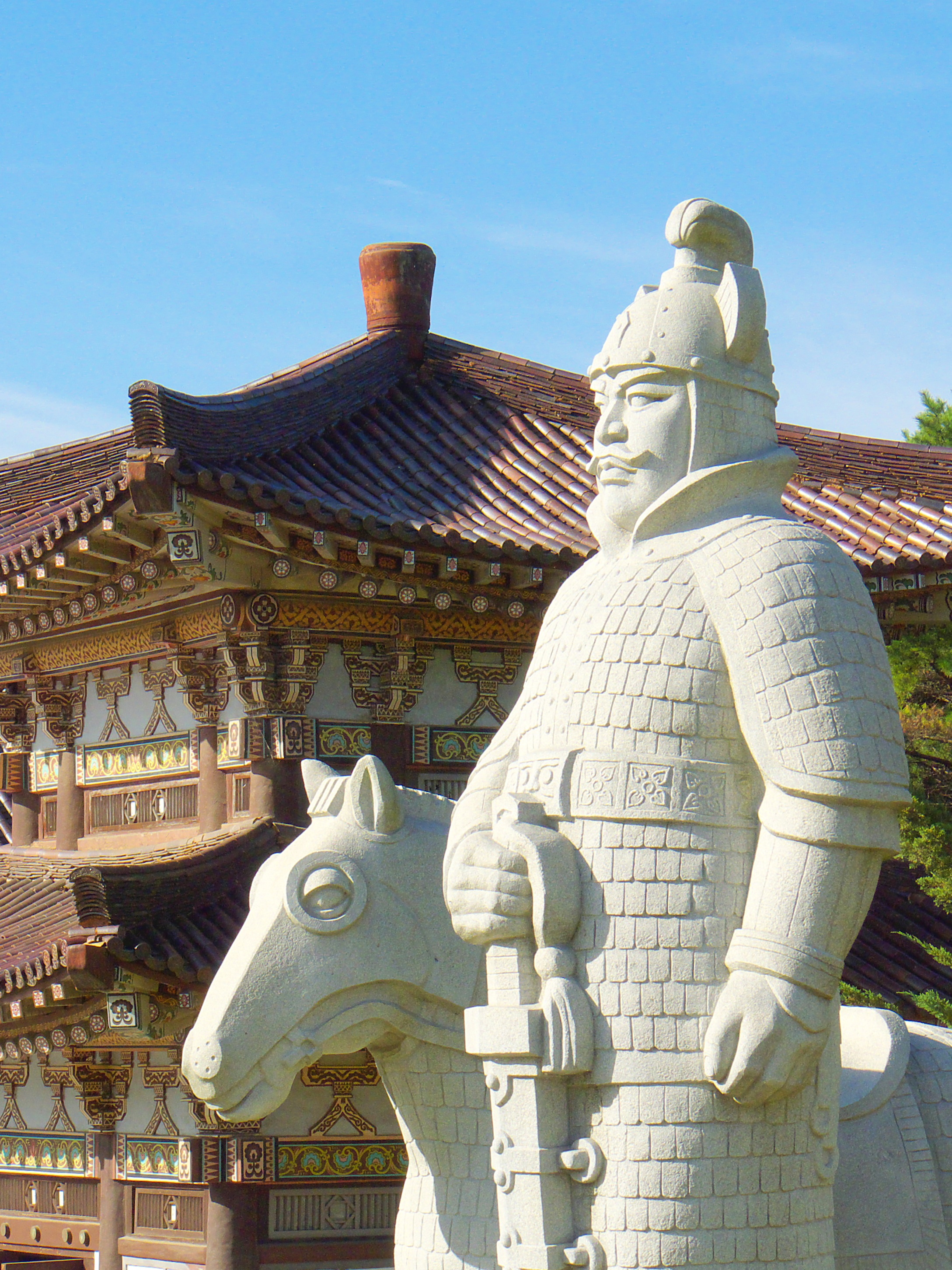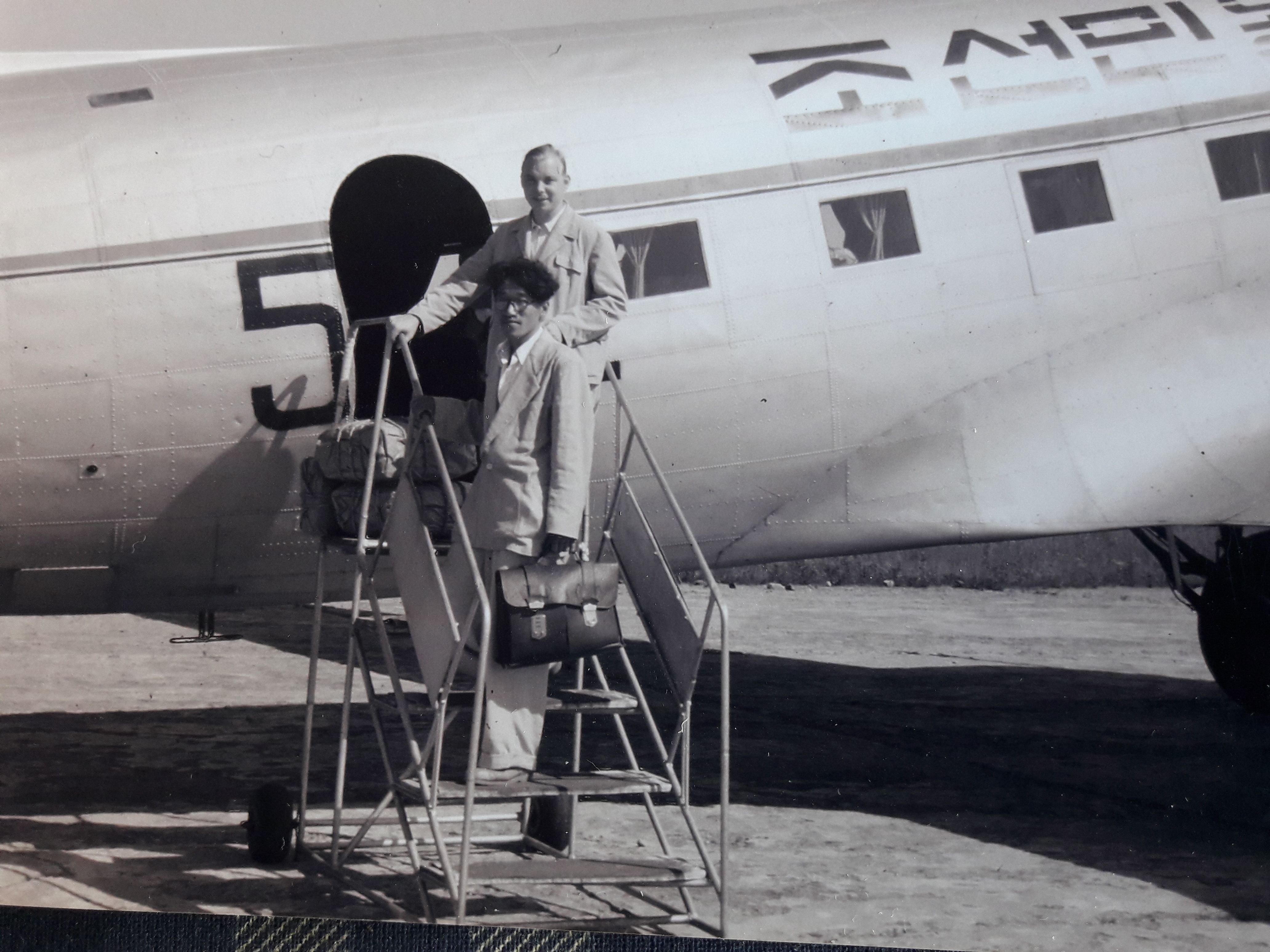|
Samjiyon
Samjiyŏn is a city in Ryanggang Province, North Korea. It takes its name from three lakes in the city, which are collectively known as the Samjiyŏn. Samjiyŏn is situated near Mount Paektu, and tour groups fly to the city's airport to see the mountain, which holds significance in North Korean mythology. Many houses and buildings in Samjiyŏn have been upgraded in recent decades, and many new buildings, including a recreational centre for youths, were finished in 2005. Popular activities in Samjiyŏn are skiing and various activities for schoolchildren, who use the surrounding area of Mt. Paektu for various scouting-like operations in conjunction with school-led vacations or outings. In December 2019, Kim Jong-un opened a completed expansion of the existing township, described by state media as a "modern" city with residences and industrial parks. The city was known as a county until the decision of an upgraded its status in December 2019. The modernization of Samjiyon Cit ... [...More Info...] [...Related Items...] OR: [Wikipedia] [Google] [Baidu] |
Samjiyon Airport (14560530404)
Samjiyŏn Airport is an airport in Samjiyon City, Ryanggang Province, North Korea. The airport is located near Baekdu Mountain. Tour groups fly to the airport for scheduled journeys to this significant landmark and to see the birthplace of Kim Jong-il. All tours to the area will include a trip here. There is a high presence of military equipment at this airport, there are large numbers of older Soviet jets such as MiG-15's lined up in sidings next to the runway and many utility vehicles/jeeps. Whether or not these are operational is unknown, but highly unlikely given their apparent condition. The only flights to this airport are from Pyongyang Sunan International Airport and served by the country's only airline: Air Koryo. The airport was built in the 1980s to accommodate a ski center planned by a South Korea South Korea, officially the Republic of Korea (ROK), is a country in East Asia, constituting the southern part of the Korea, Korean Peninsula and sharing a Kore ... [...More Info...] [...Related Items...] OR: [Wikipedia] [Google] [Baidu] |
Pukbunaeryuk Line
The Pukbunaeryuk Line, also called the Hyesan–Manp'o Ch'ŏngnyŏn Line after the only completed stage of three planned stages, is an electrified standard-gauge secondary trunk line of the Korean State Railway in Chagang and Ryanggang Provinces, North Korea, connecting the Manp'o Line at Manp'o to the Paektusan Ch'ŏngnyŏn Line at Hyesan.Kokubu, Hayato, 将軍様の鉄道 (Shōgun-sama no Tetsudō), It also connects to the China Railway Meiji Railway via the Ji'an Yalu River Border Railway Bridge between Manp'o and Meihekou, China. The Pukbunaeryuk Line was to have been a northern east-west trunk line of 북부철길 전철화, 동아일보 1992 January 30 on the Manp'o– ... [...More Info...] [...Related Items...] OR: [Wikipedia] [Google] [Baidu] |
Samjiyŏn Line
Samjiyŏn Line is the name of a railway line of the Korean State Railway in Ryanggang Province, North Korea, running from Wiyŏn on the Paektusan Ch'ŏngnyŏn Line to Motka. The name is applied both to the original narrow gauge line built in 1948, as well as to the new standard gauge line opened in 2017. While the original line was , the new standard gauge line is considerably shorter at . History To replace the Hyesan to Rimyŏngsu road, which had been built by the Japanese colonial authorities and which by the time of the Liberation of Korea had fallen into a poor state of repair, the Korean State Railway built the Samjiyŏn Line in 1948. Extensive flooding in 1994 led to the closure of the line.北 자재난 심각…2012년 국책사업 줄줄이 ‘중단’ ... [...More Info...] [...Related Items...] OR: [Wikipedia] [Google] [Baidu] |
Korean State Railway
The Korean State Railway (), commonly called the State Rail () is the operating arm of the Ministry of Railways of North Korea and has its headquarters at P'yŏngyang. The current Minister of Railways is Chang Jun Song. History 1945–1953: Liberation, Partition, and the Korean War The railway lines of North Korea were originally built during the Japanese occupation of Korea by the Chosen Government Railway (''Sentetsu''), the South Manchuria Railway (''Mantetsu'') and various privately owned railway companies such as the Chosen Railway (''Chōtetsu''). At the end of the Pacific War, in the territory of today's North Korea Sentetsu owned of railway, of which was standard gauge, and was narrow gauge; in the same territory, privately owned railway companies owned of rail lines, of which was standard gauge and was narrow gauge. At the same time, in September 1945 in the future territory of the DPRK there were 678 locomotives (124 steam tank, 446 tender, 99 narrow ga ... [...More Info...] [...Related Items...] OR: [Wikipedia] [Google] [Baidu] |
Ryanggang Province
Ryanggang Province (Ryanggangdo; ko, 량강도, ''Ryanggang-do'', ) is a province in North Korea. The province is bordered by China (Jilin) on the north, North Hamgyong on the east, South Hamgyong on the south, and Chagang on the west. Ryanggang was formed in 1954, when it was separated from South Hamgyŏng. The provincial capital is Hyesan. In South Korean usage, "Ryanggang" is spelled and pronounced as "Yanggang" ( ko, 양강도, ''Yanggang-do'', ) Description Along the northern border with China runs the Yalu River and the Tumen River. In between the rivers, and the source of both, is Paektu Mountain, revered by both the Koreans and Manchurians as the mythic origin of each people. The North Korean government claims that Kim Jong-il was born there when his parents were at a Communist anti-Japanese resistance camp at the mountain. The North Korean-Chinese border for 20 miles east of the mountain is "dry, remote and mountainous, barely patrolled," making it one of the ... [...More Info...] [...Related Items...] OR: [Wikipedia] [Google] [Baidu] |
Pyongyang
Pyongyang (, , ) is the capital and largest city of North Korea, where it is known as the "Capital of the Revolution". Pyongyang is located on the Taedong River about upstream from its mouth on the Yellow Sea. According to the 2008 population census, it has a population of 3,255,288. Pyongyang is a directly administered city () with equal status to North Korean provinces. Pyongyang is one of the oldest cities in Korea. It was the capital of two ancient Korean kingdoms, Gojoseon and Goguryeo, and served as the secondary capital of Goryeo. Much of the city was destroyed during the First Sino-Japanese War, but it was revived under Japanese rule and became an industrial center. Following the establishment of North Korea in 1948, Pyongyang became its ''de facto'' capital. The city was again devastated during the Korean War, but was quickly rebuilt after the war with Soviet assistance. Pyongyang is the political, industrial and transport center of North Korea. It is home to ... [...More Info...] [...Related Items...] OR: [Wikipedia] [Google] [Baidu] |
Paektu Mountain Tourist Road
Paektu Mountain (), also known as Baekdu Mountain and in China as Changbai Mountain ( zh, s=长白山, t=長白山; Manchu: Golmin Šanggiyan Alin), is an active stratovolcano on the Chinese–North Korean border. At , it is the highest mountain of the Baekdudaegan and Changbai ranges. Koreans assign a mythical quality to the volcano and its caldera lake, considering it to be their country's spiritual home. It is the highest mountain in North Korea and Northeast China. A large crater lake, called Heaven Lake, is in the caldera atop the mountain. The caldera was formed by the VEI 7 "Millennium" or "Tianchi" eruption of 946, which erupted about of tephra. This was one of the largest and most violent eruptions in the last 5,000 years (alongside the Minoan eruption, the Hatepe eruption of Lake Taupō in around AD 180, the 1257 eruption of Mount Samalas near Mount Rinjani and the 1815 eruption of Tambora). The mountain plays an important mythological and cul ... [...More Info...] [...Related Items...] OR: [Wikipedia] [Google] [Baidu] |
Air Koryo
Air Koryo () is the state-owned national airline of North Korea, headquartered in Sunan-guyŏk, Pyongyang. Based at Pyongyang International Airport (IATA: FNJ), it operates international scheduled and charter services to points in Asia. History Early years In early 1950, SOKAO (Soviet–Korean Airline), ) was established as a joint North Korean-Soviet venture to connect Pyongyang with Moscow. Regular flights began that same year. Services were suspended during the Korean War, resuming in 1953 as Bureau of Civil Aviation Ministry of Transport of DPRK The state airline was then placed under the control of the Civil Aviation Administration of Korea (CAAK), starting operations on 21 September 1955 with Lisunov Li-2, Antonov An-2 and Ilyushin Il-12 aircraft. Ilyushin Il-14s and Ilyushin Il-18s were added to the fleet in the 1960s. Jet operations commenced in 1975 when the first Tupolev Tu-154 was delivered for service from Pyongyang to Prague, East Berlin and Moscow. Because the ... [...More Info...] [...Related Items...] OR: [Wikipedia] [Google] [Baidu] |
Korean People's Air Force
The Korean People's Army Air and Anti-Air Force (KPAAF; ; Hanja: 朝鮮人民軍 航空 및 反航空軍 ) is the unified military aviation force of North Korea. It is the second largest branch of the Korean People's Army comprising an estimated 110,000 members.North Korea Country Study , pp. 18-19 It possesses around 950 aircraft of different types, mostly of decades-old Soviet and Chinese origin. Its primary task is to defend North Korean airspace. History Early years (1945–1949) The Korean People's Army Air and Anti-Air Force began as the "Korean Aviation Society(조선 항공대)" in 1945. It was organized along the lines of flying clubs in the |
Kim Jong-un
Kim Jong-un (; , ; born 8 January 1982) is a North Korean politician who has been Supreme Leader of North Korea since 2011 and the leader of the Workers' Party of Korea (WPK) since 2012. He is a son of Kim Jong-il, who was North Korea's second supreme leader from 1994 to 2011, and Ko Yong-hui. He is a grandson of Kim Il-sung, who was the founder and first supreme leader of North Korea from its establishment in 1948 until his death in 1994. Kim Jong-un is the first leader of North Korea to have been born in the country after its founding in 1948. From late 2010, Kim was viewed as successor to the leadership of North Korea. Following his father's death in December 2011, state television announced Kim as the "Great Successor". Kim holds the titles of General Secretary of the Workers' Party of Korea, Chairman of the Central Military Commission, and President of the State Affairs. He is also a member of the Presidium of the Politburo of the Workers' Party of Korea, the hi ... [...More Info...] [...Related Items...] OR: [Wikipedia] [Google] [Baidu] |
.jpg)



